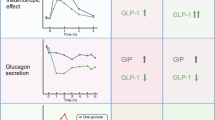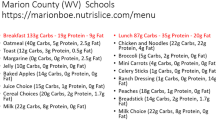Abstract
Hyperinsulinemia has been assumed to contribute to the pathogenesis of atherosclerosis. To assess the reliability of such claim we planned a retrospective study on a cohort of patients with pancreatic insulin producing neoplasm. A correlation was sought between fasting insulin plasma levels and the metabolic profile emerging from those parameters known to be cardiovascular risk factors, i.e. plasma triglycerides and cholesterol, insulin resistance, hypertension. Special attention was paid to the duration of disease, because the time exposure to hyperinsulinemia could play an important role in developing cardiovascular disease. Seventy patients, 41 females and 29 males, aged 44.9±1.96 yr (range 15–80), with surgically proved insulinoma were included in the study. Chronic exposure to hyperinsulinemia was documented through the measurement of insulin plasma levels either in the fasting state or post-prandially, resulting in 44.7±3.28 and 149.9±12.22 μU/ml, respectively. Fasting glycemia in average was 45.3±1.34 mg/dl. Plasma triglycerides and cholesterol concentrations were 136.3±7.93 and 195.8±5.18 mg/dl, respectively, their distribution overlapping that anticipated for the general population. No correlation arose between the degree of hyperinsulinemia and the lipidic profile. Preoperative blood pressure was 136.9±2.87 mmHg, systolic and 81.9±1.32 mmHg, diastolic. Hypertension was present in 5 (7.1%) out of 70 patients and persisted after tumor removal. A condition of insulin resistance (M=4.06±0.4 mg/kg min vs 7.41±0.21) was documented through the euglycemic hyperinsulinemic clamp technique in 20 patients and showed a positive and significant correlation with fasting insulinemia. In conclusion, these data suggest that insulinomas do not develop an increased risk of cardiovascular disease and we believe that insulin needs the interplay of other factors to manifest its atherogenic potential effect.
Similar content being viewed by others
References
Stout R.W. Insulin and atheroma. Diabetes Care 13: 631, 1990.
Pyorala K. Relationship of glucose tolerance and plasma insulin to the incidence of coronary heart disease: results from two population studies in Finland. Diabetes Care 2: 131, 1979.
Pyorala K., Savolainen E., Kaukola S., Haapakoski J. High plasma insulin as a coronary heart disease risk factor: relationship to other risk factors and predictive value during 91/2 years follow-up of the Helsinki Policemen Study Population. Acta Med. Scand. (Suppl.) 701: 38, 1985.
Welborn T.A., Wearne K. Coronary heart disease incidence and cardiovascular mortality in Busselton with reference to glucose and insulin concentration. Diabetes Care 2: 154, 1979.
Fontbonne A., Tchobroutsky G., Eschwege E., Richards J.L., Claude J.R., Rosselin G. Coronary heart disease mortality risk: plasma insulin level is a more sensitive marker than hypertension or abnormal glucose tolerance in overweight males. The Paris prospective study. Int. J. Obesity 12: 557, 1988.
Fontbonne A., Charles M.A., Thibult N., Richards J.L., Claude J.R., Warnet J.M., Rosselin G.E., Eschwege E. Hyperinsulinemia as a predictor of coronary heart disease mortality in a healthy population: the Paris prospective study, 15-year follow-up. Diabetologia 34: 356, 1991.
Stato Y., Shiraishi S., Oshida Y., Ishiguro T., Sakamoto N. Experimental atherosclerosis-like lesions induced by hyperinsulinism in Wistar rats. Diabetes 38: 91, 1989.
Capron L., Jarnet J., Kazandjian S., Housset E. Growth-promoting effects of diabetes and insulin on arteries. An in vivo study of rat aorta. Diabetes 35: 973, 1986.
Jarrett, R.J. Is insulin atherogenic? Diabetologia 31: 71, 1988.
De Fronzo R.A., Ferrannini E. Insulin resistance: a multi-faceted syndrome responsible for NIDDM, obesity, hypertension, dyslipidemia, and atherosclerotic cardiovascular disease. Diabetes Care 14: 173, 1991.
Tamburrano G, Leonetti F., Sbraccia P., Giaccari A., Locuratolo N., Lala A. Increased insulin sensitivity in patients with idiopathic reactive hypoglycemia. J. Clin. Endocrinol. Metab. 69: 885, 1989.
Laurenzi M., Trevisan M. Sodium-lithium countertransport and blood pressure: the Gubbio population study. Hypertension 13: 408, 1989.
The research group ATS-RF2-OB43 of the Italian National Research Council. Time trends of some cardiovascular risk factors in Italy, Results from the nine communities study. Am. J. Epidemiol. 126: 95, 1987.
Progetto Monica”Area Brianza”. Distribuzione dei fattori di rischio coronarico. G. Ital. Cardiol. 18: 1034, 1988.
Nagi D.K., Hendra T.J., Cooper T.M., Temple R.C., Clarke P.M.S., Schneider A.E., Hales C.N., Yudkin J.S. The relationship of concentration of insulin, intact proinsulin and 32–33 split proinsulin with cardiovascular risk factors in type 2 (non insulin dependent) diabetic subjects. Diabetologia 33: 532, 1990.
Tsutsu N., Nunoi K., Kodama T., Nomiyama R., Iwase M., Fijishima M. Lack of association between blood pressure and insulin in patients with insulinoma. J. Hypertension 8: 479, 1990.
Pontiroli A.E., Alberetto M., Pozza G. Patients with insulinoma show insulin resistance in the absence of arterial hypertension. Letter. Diabetologia 35: 294, 1992.
Sawicki P.T., Heinemann L., Sparke A., Berger M. Hyperinsulinemia is not linked with blood pressure elevation in patients with insulinoma. Diabetologia 35: 649, 1992.
O’Brien T., Young W.F., Palumbo P.J. O’Brien P.C., Service F.J. Is the hyperinsulinemia of insulinoma associated with hypertension and hypertriglyceridemia? Diabetologia 34 (Suppl. 2): A19, 1991.
Welin L., Eriksson H., Larsson B., Ohlson L.Q., Svardsudd K., Tibblin G. Hyperinsulinaemia is not a major coronary risk factor in elderly men. Diabetologia 35: 766, 1992.
Author information
Authors and Affiliations
Rights and permissions
About this article
Cite this article
Leonetti, F., Iozzo, P., Giaccari, A. et al. Absence of clinically overt atherosclerotic vascular disease and adverse changes in cardiovascular risk factors in 70 patients with insulinoma. J Endocrinol Invest 16, 875–880 (1993). https://doi.org/10.1007/BF03348949
Received:
Accepted:
Published:
Issue Date:
DOI: https://doi.org/10.1007/BF03348949




